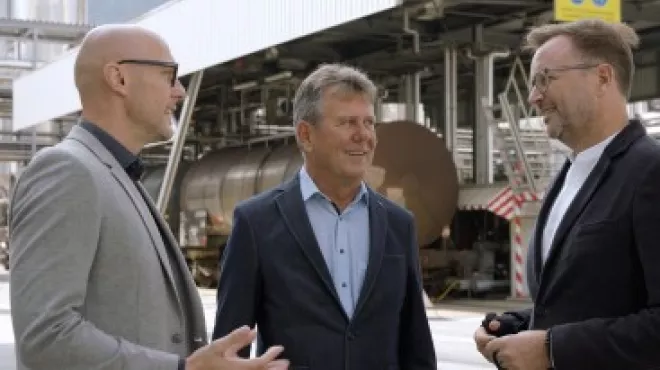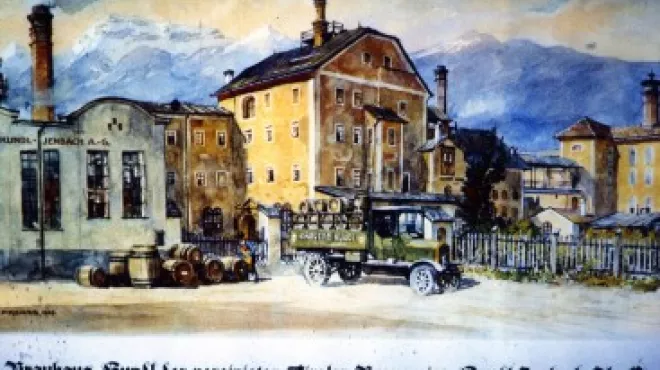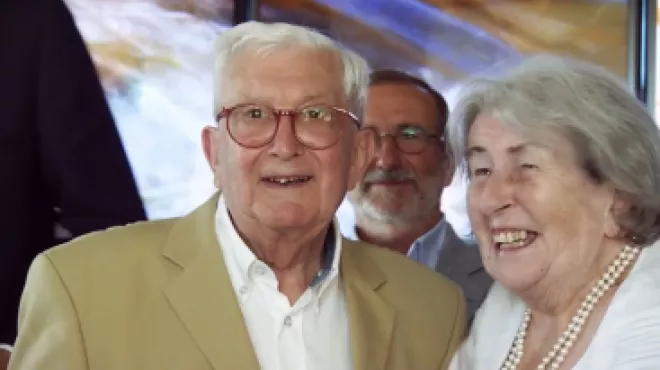Anfang der 1950er Jahre lief die Kundler Produktion von injizierbarem Penicillin zunehmend stabil. Ein Problem aber blieb: Bakterielle Infektionen zerstörten immer wieder ganze Produktionschargen des wertvollen Arzneimittels. Auf der Suche nach einer Lösung schrieben zwei junge Forscher Medizingeschichte. Sie entdeckten das säurestabile Penicillin.
Nach Abschluss seines Doctorandums bewarb sich der 30-jährige Ernst Brandl im Sommer 1949 für einen Platz als Ferialpraktikant bei der Biochemie. Sein Monatslohn betrug 300 Schilling. „Das freie Kantinenessen“, so schreibt er später, „erschien mir als ein zusätzliches Geschenk dafür, dass ich mit meinem neuen Fach Bekanntschaft schließen durfte: der angewandten Mikrobiologie.“ (Quelle: Sandoz GmbH).
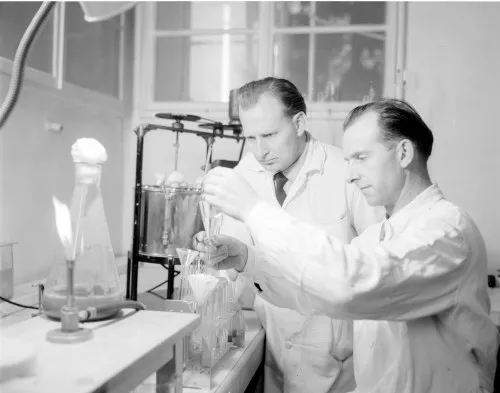
Penicillin
So machte sich der junge Chemiker auf die Suche nach einem antibakteriellen Mittel, das dem Nährmedium des Penicillin-Pilzes zugefügt werden konnte, ohne diesen am Wachsen zu hindern. Phenoxyessigsäure bot sich an, zum Reinigen der Fässer auch in der Bierherstellung verwendet. Sie stört das Wachstum der Hefe nicht und schützt sie zugleich vor unerwünschter bakterieller Infektion. Ernst Brandl ersetzte also den üblichen Ausgangsstoff Phenylessigsäure durch Phenoxyessigsäure und überprüfte die Menge des gebildeten Penicillins im Vergleich zur normalen Fermentation.
Am 17. November 1951, dem Tag seiner Promotion zum Dr. phil. an der Universität Innsbruck, setzte er die entscheidende Versuchsreihe in Gang. Die Messungen in der darauffolgenden Woche ergaben eine verblüffend hohe biologische Aktivität, und bald stand fest: Ein neues Penicillin war gefunden. Für dessen Isolierung und Charakterisierung bekam Ernst Brandl Unterstützung seines Studienfreundes und Kollegen Dr. Hans Margreiter.
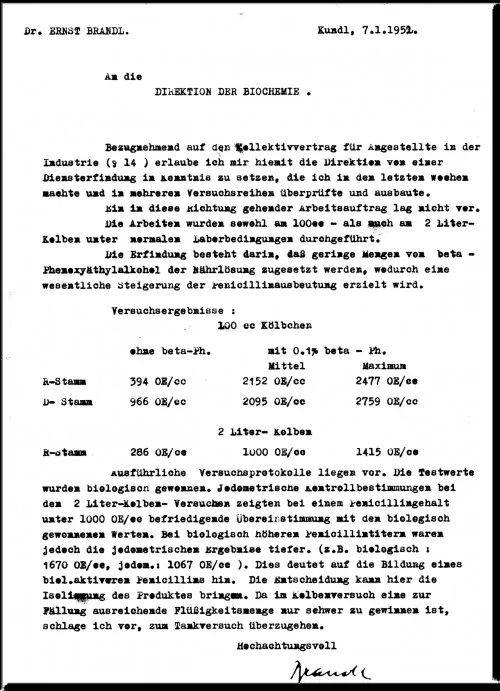
Das Unterfangen war mühsam und zog sich oft bis in die Nachstunden hin. Eines Abends stellten die beiden die Versuchsröhrchen ungereinigt in den Eprouvettenständer zurück. An nächsten Morgen – es war der 10. Februar 1952 – bemerkte Margreiter einen weißen Niederschlag in der sauren wässrigen Phase einiger Röhrchen. Beim bislang bekannten Penicillin war das nicht vorgekommen. Es hielt der Säure nicht stand. Margreiter vermutete sofort, dass es sich um das neue Penicillin handeln musste. Und er behielt recht.
Die Überprüfung der biologischen Aktivität ergab: Dieses Penicillin auch unter dem Einfluss von Säure hochaktiv. Es musste also säurestabil sein – ein Sieg der Wissenschaft.
Das säurestabile Penicillin kam 1953 in den Handel. Es ist heute noch Teil des Sandoz Portfolios und hat Millionen von Menschen bei bakteriellen Infektionskrankheiten das Leben gerettet.
Penicillin in tablet form. Memories of a historical event
At the beginning of the 1950s, Kundl's production of injectable penicillin was increasingly stable. But one problem remained: bacterial infections repeatedly destroyed entire production batches of the valuable drug. In their pursuit of a solution, two young researchers made medical history. They discovered the acid-stable penicillin.
After completing his doctorate, 30-year-old Ernst Brandl applied for a traineeship at Biochemie GmbH in the summer of 1949. His monthly wage was 300 Austrian Schillings. "The free canteen food," he later wrote, "seemed to me an additional gift for being allowed to make acquaintance with my new profession: applied microbiology." (Source: Sandoz GmbH).

Thus, the young chemist set out to find an antibacterial agent that could be added to the culture medium of the penicillin fungus without preventing it from growing. Phenoxyacetic acid, also used in beer production to clean the barrels, was the obvious choice. It does not inhibit the growth of the yeast and simultaneously protects it from unwanted bacterial infection. Ernst Brandl therefore replaced the usual starter compound, phenylacetic acid, with phenoxyacetic acid and monitored the amount of penicillin formed in comparison to normal fermentation.
On November 17th 1951, the day he received his doctorate at the University of Innsbruck, he initiated the decisive trial series. The measurements in the following week showed an astonishingly high biological activity, and soon it was clear: a new penicillin had been found. For its isolation and characterisation, Ernst Brandl was supported by his student friend and colleague Dr. Hans Margreiter.

The undertaking was arduous and often dragged on into the night hours. One evening, the two put the test tubes back in the eprouvette rack, uncleaned. The next morning – it was February 10th, 1952 – Margreiter noticed a white precipitate in the acidic aqueous phase of some of the tubes. This had not happened with the well-known penicillin. It did not withstand the acid. Margreiter immediately suspected that this must be the new penicillin. And he was right.
The examination of the biological activity showed: this penicillin was also highly active under the influence of acid. It therefore had to be acid-stable - a victory for science.
The acid-stable Penicillin was launched in 1953. It is still part of the Sandoz portfolio today and has saved the lives of millions of people from bacterial infectious diseases.

